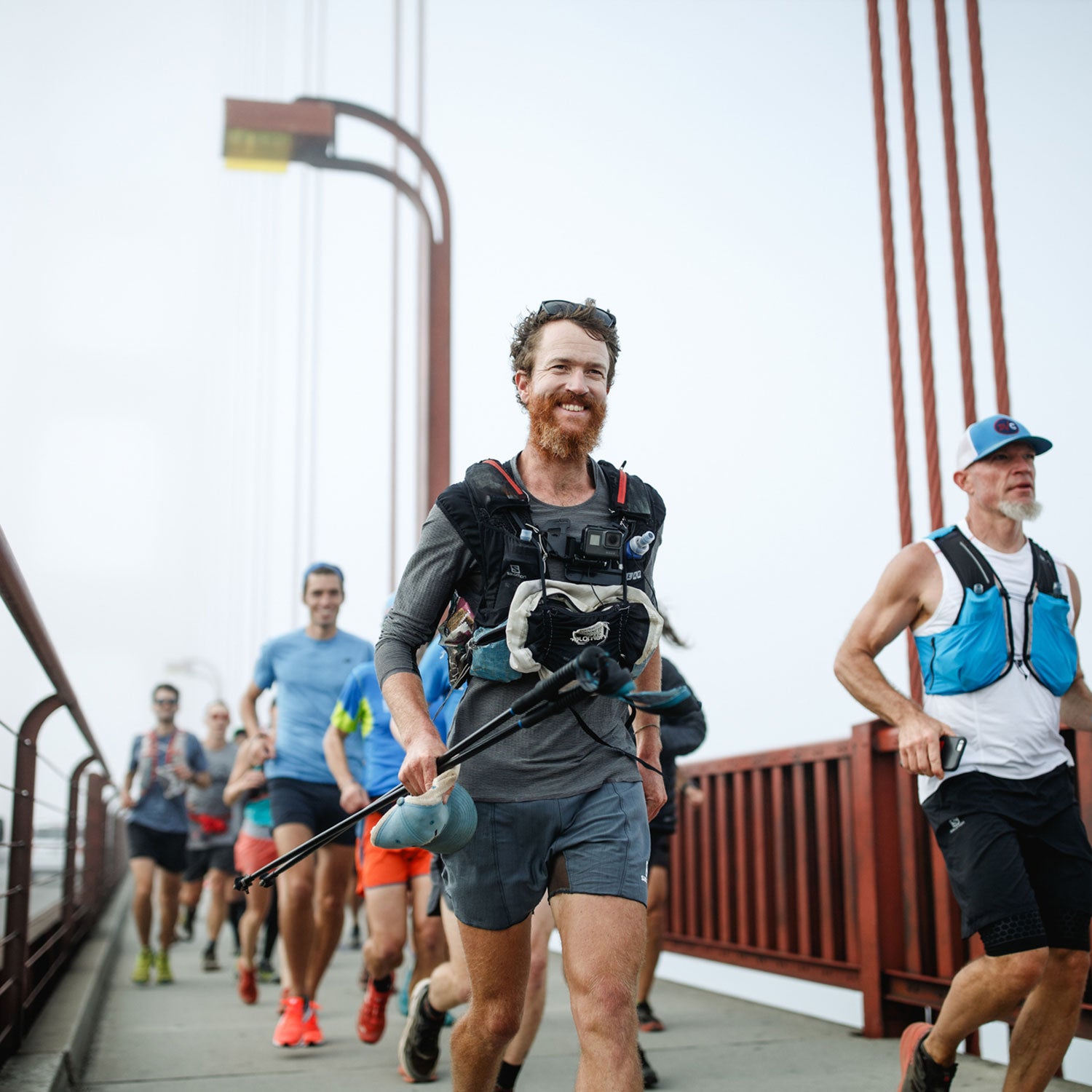If you’re the kind of person who’s prone to travel-inspired FOMO, you probably shouldn’t follow ultrarunner . Here’s a random sampling of the places where he’s logged miles over the past few years: the Canary Islands, the Japanese Alps, Uganda, New Zealand, Alaska, Ireland, the South Pole. Globetrotting isn’t a competition, but if it were, Gates would win.
��
Recently, though, he’s made a conscious effort to keep his wanderings closer to home, relatively speaking. Last year, over the course of five months, he crossed the United States on foot—4,000 miles from South Carolina to California. The impetus for the journey wasn’t to set a speed record, à la Pete “13,000-calories-a-day” Kostelnick, but to take his time and become better acquainted with his own country.��“It’s become increasingly popular to get on an airplane and fly halfway around the world for a running experience,” Gates says. “But I would argue that most people don’t know their own backyard all that well.”
��
For his next project, Gates wants to run —a distance of over 1,200 miles. The tentative time frame is mid-October to around Thanksgiving. But, true to his freewheeling style, Gates isn’t too concerned about sticking to a fixed schedule. As Gates sees it, running every street of a major city is a logical follow-up to last year’s cross-country trek. The spark came while he was recovering from the journey at his girlfriend’s home in the Berkeley Hills about a year ago. Coming off the great loneliness of the road, he was acutely aware of being back in a densely populated space, surrounded by millions of anonymous lives.��
��
“The idea came to me to do a similar journey as my run across the country, but concentrated in a very small area that’s arguably every bit as diverse,” Gates says. “Knowing a very thin line of a vast expansive place is one way to understand a large population, but getting to know where the masses congregate, i.e. cities, is equally as important,” he adds.
��
From a logistical standpoint, cutting a thin line across the country might be less daunting than figuring out how to navigate an entire urban grid with maximum efficiency. Since there are a near infinite number of ways Gates could go about covering all of San Francisco, optimizing his route could potentially save him hundreds of miles. For that reason, he says he’s reached out to some of his mathematically gifted friends to help him with his planning.��Gates cited and the as two prominent examples from graph theory that engage with a similar challenge. (The latter may be familiar from those nifty puzzles, where the objective is to trace a given shape without lifting your pen from the paper or drawing the same line twice.) ��
Gates isn’t the first person to plan a trek like this in San Francisco, but if he succeeds, he’ll certainly be the quickest. In 2010, Tom Graham, a former editor and writer for The San Francisco Chronicle, documented his own quest to hike the entire city in . To accomplish the feat, Graham estimates that he walked somewhere between 1,500 to 2,000 miles, on and off, over a seven-year span. In from the same year, Graham notes that, to his knowledge, only two other people had allegedly done it before—both of whom took at least five years.��
��
As he did on his cross-country run, Gates plans to carefully document the journey by taking copious photos and recording footage, which his sponsor Salomon will develop into a film. Overall, the project sounds like an exercise in urban anthropology—which is how Gates seems to be approaching it. “I kind of feel like I owe it to the public to share this experience,” he says. “I have this unique ability and opportunity to take on these projects that most people either can’t do for physical, time, or money reasons. I will be taking diligent notes, photographing on a daily basis, and accumulating as many portraits as I can.”
��
On the one hand, it’s wise to be wary of individuals who . This is especially true when those people are professional recreationalists. But there’s a disarming sincerity in Gates’s pursuits, and a lack of self-importance. Maybe it’s that unobtrusive ultrarunner demeanor, but it feels believable when, for instance, he says that one of the welcome discoveries of his cross-country trip was to find that we’re not as inconsolably divided as cable news rage-fests might imply. Or maybe it’s that Gates is enough of a weirdo that his stunts don’t come off as gimmicky or contrived. An of the stranger in Arkansas who gave Gates an unsolicited $160 comes hot on the heels of a roadkill pic titled, “.”
Even if you aren’t seduced by Gates’s artistic vision, it’s easy to appreciate the impulse to do something different at a time when so many hardcore endurance feats could benefit from a little creativity. Completing the “Badwater Quad” (running the 135-mile ultra through Death Valley four times in a row) is impressive, but, as a concept, it’s also pretty boring. And don’t get me started on the World Marathon Challenge, which involves running seven marathons in seven days on seven continents—and charges participants $40,000 to take part.
��
The World Marathon Challenge is the most extreme iteration of movement toward destination running that Gates seems to be subtly pushing back against—even if his own recent far-flung exploits have contributed to the trend. But rather than being a scold to the jet-setter running crowd, Gates is more interested in meeting people in his local environment and hearing their stories. Running and walking, it turns out, can be a rather helpful means to that end.��
“When you’re on foot,��you’re just assuming a much more humble and vulnerable position,” Gates says. “Sometimes that can be all it takes to really break down a lot of barriers between our fellow humans.”


